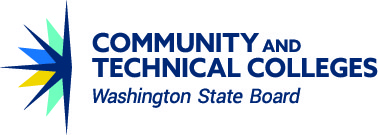Washington’s Community and Technical Colleges | System Overview 2025
Chris Bailey
- Martin Valadez, Pasco, chair
- Kady Titus, Spokane, vice chair
- Bernal Baca, Tacoma
- Ben Bagherpour, Vancouver
- Crystal Donner, Everett
- Mack Hogans, Kirkland
- Chelsea Mason-Placek, Puyallup
- Jay Reich, Seattle
- Emily Yim, Mukilteo

To get a good job these days, people need education past high school. Washington's 34 community and technical colleges make it possible for people of all ages and backgrounds right in their local communities. Our students can choose from a variety of options that fit them best — whether they want to train for a specific career, transfer to a university, or learn a skilled trade — and our colleges will support them all the way. The result is more economic opportunity for the people, communities and businesses of Washington state.
Key Facts
Enrollment
- Headcount (all sources): 290,140
- FTES (all sources): 143,972
- Headcount (state-funded): 204,604
- FTES (state-funded): 100,974
Students in Selected Programs
- Apprentices: 12,273
- Bachelor's: 7,168
- Corrections: 5,315
- I-BEST: 8,267
- International: 7,817
- Running Start: 32,030
- Worker Retraining: 9,493
Type of Student
- Academic/transfer: 36%
- Basic skills: 16%
- Workforce education: 28%
- Other: 20%
Race/Ethnicity*
- 53% students of color
- American Indian/Alaska Native: 4%
- Asian: 17%
- Black/African American: 12%
- Hispanic/Latino: 23%
- Pacific Islander: 2%
- White: 61%
Attendance
- Full-time: 47%
- Part-time: 53%
Family and Finances
- Students receiving need-based financial aid: 45%
- Students with dependents: 24%
Gender
- Female: 56%
- Male: 43%
- X: 1%
Median age
- 23
- Associate degrees awarded: 23,310
- Full time lower division resident tuition for an academic year: $4,772
- Full time upper division resident tuition for an academic year: $7,620
- Students received job training with the help of Opportunity Grants: 4,515
Data is from the 2023-24 academic year. Reflects headcount unless otherwise noted.
*Students of color percent based on unduplicated headcount. Students may be counted in more than one race, so race/ethnicity percentages may not total 100%. Percentages calculated on reported value.
Percentages may not total 100% due to rounding.